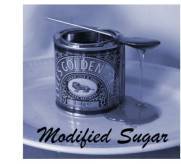So this is saying that small amounts of fructose without glucose doesn’t cause fatty liver?
Is it the insulin signaling due to glucose that causes it to be stored in the liver or will just excess fructose do it?

So this is saying that small amounts of fructose without glucose doesn’t cause fatty liver?
Is it the insulin signaling due to glucose that causes it to be stored in the liver or will just excess fructose do it?
According to my source for such information (chat), the increase in DNL in the liver “… is a downstream effect of increased (visceral) adipose lipolysis.”
And " Isocaloric, isonutrient, same amount of fructose. The only difference is where glucose (!) is absorbed, and this differentiates between healthy and fatty liver."
My understanding is as long as the liver is producing trigs and exporting them the fat won’t build up there.
…for example in rodents submitted to a 60% high fructose diet for eight weeks [18] or to a western diet where fructose is provided as a 30%-fructose containing beverage for eight weeks [19].
Thus, as fructose is both substrate and activator of DNL, it appears as the most potent lipogenic carbohydrate contributing to the development of liver steatosis.
Eating fructose with glucose or starch makes the problem worse. Much like eating carbs AND high fat together. Pure fructose (if you can find any) would be malabsorbed by the gut at a certain point before you could eat a lot of it.
[dang, I have to go drive somewhere now]
Closest real food would be whole fiberous fruit. I’d stl separate that from a fatty meal.
Curiosly, some artifucial sweetners do the same thing.
Isn’t fruit 50:50 fructose sucrose
I just avoid it altogether… the joy of carnivore.
I don’t understand all the mechanisms well enough to be coherent on it. I can dig up a FB link when i get home.
You are correct. For some reason I thought they would be mostly fructose. The slow digestion of a whole fruit will blunt the effect compared to a juice.
Table of types of sugars in fruit here : https://thepaleodiet.com/fruits-and-sugars/
It wouldn’t be too difficult to make a pure fructose sweetener from HFCS would it? I’m thinking they manipulate the content of different HFCS ratios already.
Found an applicable FB link of you’re interested in mechanisms of DNL NAFLD
[I’m going to try to explain the two main methods of fatty liver formation described in this study in a future post.]
Are you sure? He did add starches to his kids meals, made them the same calories and saw very different results.
Three types:
HFCS-42 is a form of high fructose corn syrup that contains 42% fructose. 10% sweeter than sugar. A typical breakdown would be:
Sugar Percentage Fructose 42% Glucose 53% Maltose 5%
HFCS-55 is a form of high fructose corn syrup that contains 55% fructose. 25% sweeter than sugar. A typical breakdown would be:
Sugar Percentage Fructose 55% Glucose 41% Maltose 4%
HFCS-90 (highly concentrated)
HFCS-90 is a form of high fructose corn syrup that contains 90% fructose.

It is produced from corn starch. It is the sweetest of the three commonly used formulations being almost 1.6 times as sweet as sugar.
A typical breakdown would be:
Sugar Percentage Fructose 90% Glucose 5% Maltose 5%
Over the past 30 years high fructose corn syrup has replaced sugar as the sweetener in soft drinks. In Japan it represents approx 25% of the sweeteners and in the EU it is hardly used at all. Because of subsidies and tariffs it is approx half the price of sugar in the USA, though the real cost of producing it is probably similar to sugar. …More
Note: “…The rats fed the HFCS seemed to develop an insatiable appetite and grew fat on their regular food. This did not happen with ordinary sugar. …”
The age of quotas ended in late 2017. Due to a crash in sucrose prices the actual use of HFCS has still declined vs. 2017.
Crystalline fructose is available, although it’s not produced in the EU, but e.g. in Turkey. He highest fructose containing syrup is around 95-96 %. However, the use is almost always in processed foods that contain starch, i.e. a lot of glucose, so that the ratio is not shifted any further than in HFCS 55. There are just a few exceptions, and the immediate reason for concern when the F:G ratio is above 1.5 is malabsorption, and consequently GI symptoms.